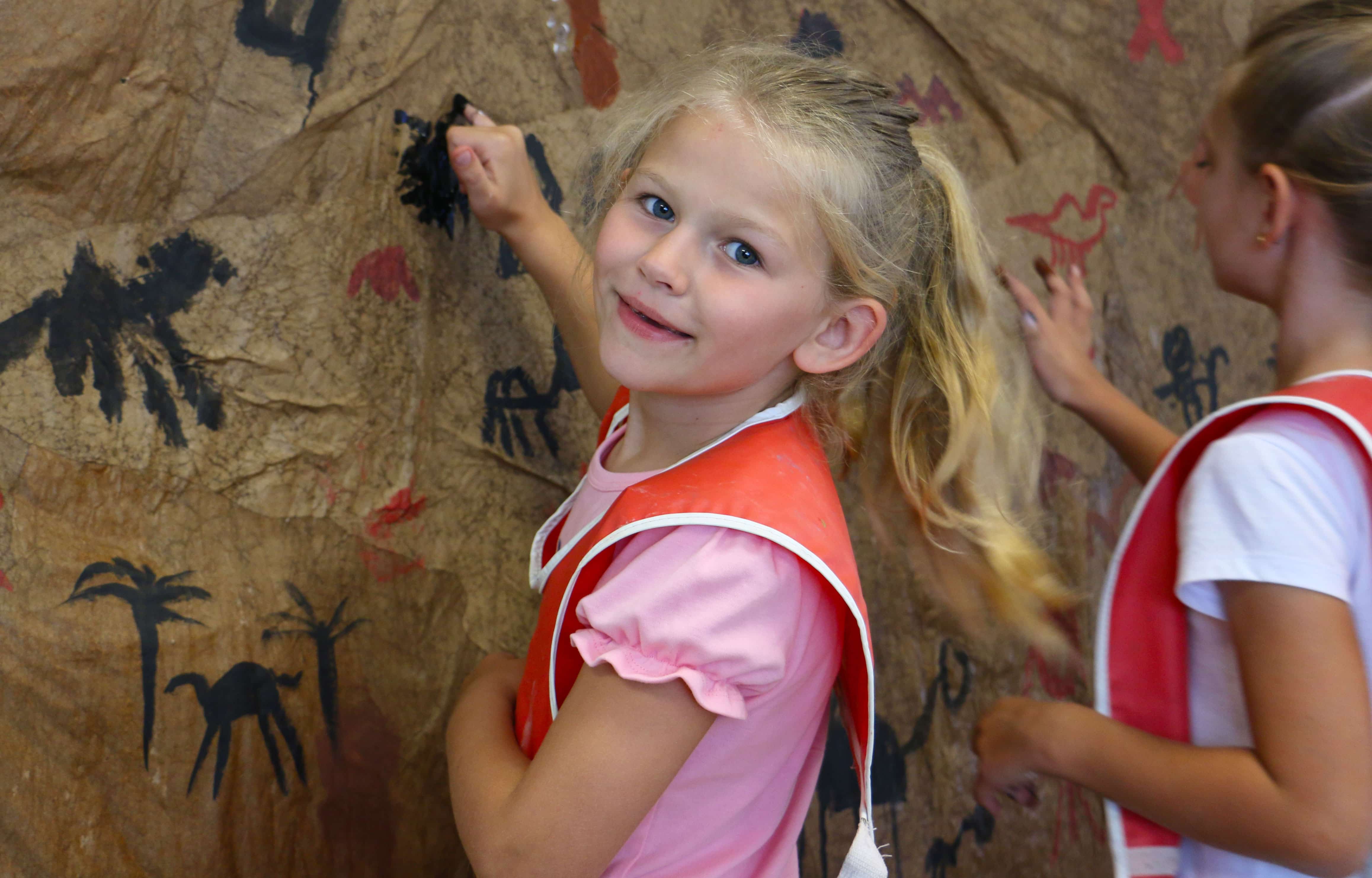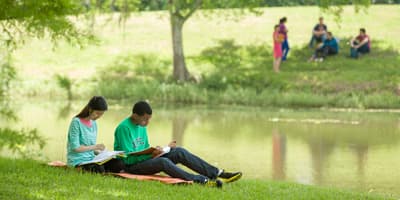Kids in UHCL's summer art school learn about Omani cave paintings
June 15, 2018 | UHCL Staff

Children enrolled in this summer’s Art School for Children program at University of
Houston-Clear Lake will be celebrating the school’s 40th anniversary, but they’ll
also be learning about art that came from halfway around the world and depicts the
way people lived, worked and traveled to at least the late first millennium B.C.
In April, a collection of 31 photos and prints of prehistoric cave art discovered
in Oman was brought to UH-Clear Lake for public exhibition and for use in the Art
School for Children’s 40th anniversary celebration. The art was discovered inside
numerous caves in the Dhofar region of Oman, a region important for frankincense production,
seafaring and trade.
The photographs, on loan from the Sultan Qaboos Cultural Center in Washington, D.C.,
represent the work of archaeologist William Zimmerle, assistant professor of humanities
at Fairleigh Dickinson University Metropolitan Campus in Teaneck, N.J., and his colleague,
Ali Ahmed Al Shahri, who is featured in the photographs.
While on a study trip with students to Oman this past January, Associate Professor
of Anthropology, Maria Curtis collected a number of books about Omani history and
culture from the region and brought them to UH-Clear Lake’s Art School’s Director
David Moya.
Together they worked to develop a curriculum based on cave art and the larger cultural
context of southern Oman and its connections to East Africa, to implement with young
artists this summer. As a result, this year’s Art around the World curriculum focuses
largely on Oman and Ethiopia.
“The curriculum that we created to teach kids is called ‘Art Around the World – African
and Gulf States,’” Moya said. “We’re using the cave art images as a teaching tool.
First, we debrief students about the background information and teach them to treat
it as though they were in a museum. We’ve come up with several guided questions to
think about as they look at the images.”
In class, the instructors reinforce the ideas they’ve learned, and use the images
in the collection as inspiration. “The colors in the images are neutral,” Moya said.
“So one of the concepts we cover is the earth tones they used and how to apply that
color scheme to their own art.”
Curtis said that the art was probably created by people who came to live temporarily
in the caves during the monsoon season in that singularly green, lush part of the
Arabian Peninsula. “Some of the images seem to have the purpose of sharing agricultural
knowledge,” she said. “It seems artistic to us, but a lot of it seems to be presenting
or teaching things, like how to cultivate seed pits, or showing battle scenes on the
water, involving ships. According to Dr. Zimmerle's research, the many of the scenes
are inherently social, and we believe they were mainly done by women.”
The caves, continued Curtis, were like a “caravansary”—something like a temporary
dwelling for caravans of people on the move, perhaps a bit like a rest stop or an
inn. “Most of the images are about moving or trading,” she said.
“The children will be making art that reflects themselves,” Moya said. “The first
lesson in the curriculum is about the importance of hospitality in African cultures
and Gulf State cultures. We want to teach kids to encounter new things with an open
mind and ask themselves how they treat others.”
As an example, Moya points to photos of an ancient coffee pot. “Coffee was a central
part of hospitality – it’s a formal ceremony to serve it,” he said. “We draw parallels
between Arabian and Ethiopian coffee pots and their importance as vessels for socializing.
Other lessons that directly involve the cave art exhibition are a stamp printmaking
lesson, in which kids will choose imagery from a previous lesson to put on their stamp
to show where they’ve ‘been,’” Moya said. “We have also created a ‘cave wall’ and
we will have students draw their own cave art right on the wall.”
Other lessons in the curriculum cover the animals depicted in the cave art and the
sea vessels in which people sailed the world. “All the lessons tie in with the exhibition,”
Moya said. “The message is that culture is fluid and instead of highlighting the differences,
we’re learning about our similarities.” For more information about the Art School
for Children, visit https://apps.uhcl.edu/Ecommerce/Schedule/AS.
About the Author:
Recent entries by
October 18 2022
Better technology transforms campus safety: Police Chief demonstrates SafeZone to students
October 14 2022
Student's skill with drones takes chicken turtle research to new heights
October 11 2022
Planting event to help UHCL restore native plants to campus, support environmental sustainability







